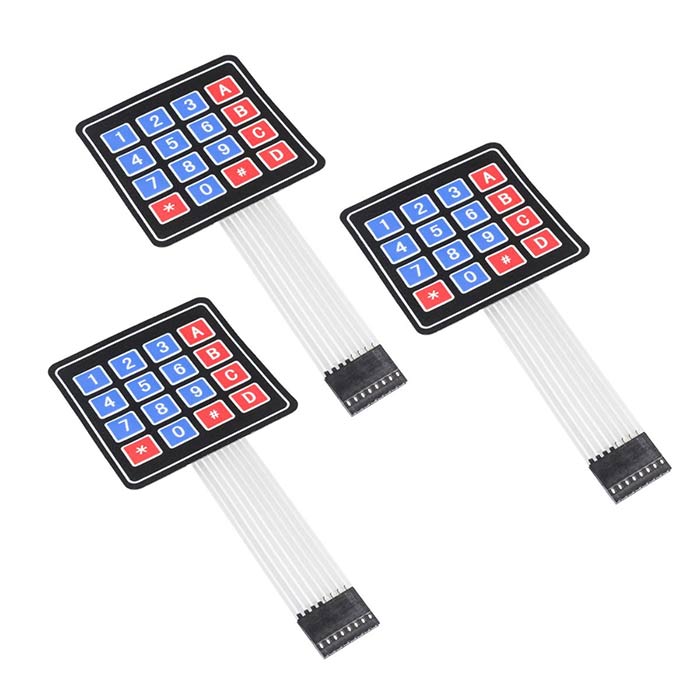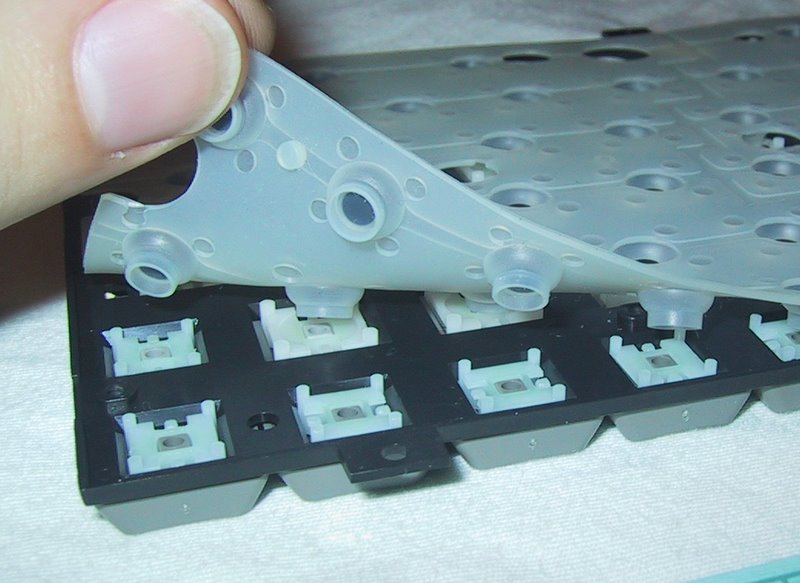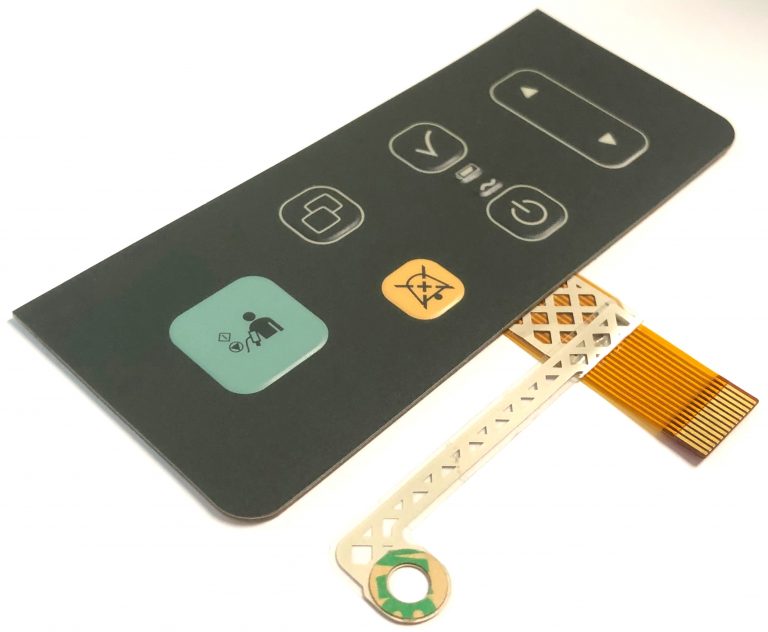An innovative membrane switch manufacturer can develop next-gen features and materials.
An innovative membrane switch manufacturer can develop next-gen features and materials.
Blog Article
Everything About Membrane Switch Over: Comprehending Its Design and Capability
When you think of the control interfaces in modern-day devices, membrane layer buttons typically enter your mind. These elements are more than just buttons; they mix design and performance seamlessly. Comprehending how they work and what makes them reliable can alter your viewpoint on daily electronic devices. There are subtleties to their design and efficiency that you might not be aware of. Let's explore what collections membrane switches over aside from various other control systems.
What Are Membrane Switches?

Their smooth nature makes them very easy to tidy and immune to dust and wetness, an essential function in lots of settings. Membrane layer buttons can likewise be tailored regarding form, dimension, and graphics, enabling manufacturers to produce distinct interfaces tailored to details items. Plus, they're lightweight and thin, which assists in lessening the general bulk of tools. On the whole, membrane layer switches play a significant function in enhancing customer experience throughout a broad range of applications.
How Membrane Layer Changes Job
When you press a trick on a membrane layer button, it turns on a simple yet reliable mechanism. membrane switch manufacturer. The leading layer, often made of adaptable material, pushes down onto a conductive layer underneath it.
You'll discover that the tactile feedback varies based upon the button design, using either a soft click or a more noticable feedback. Once you release the trick, the membrane go back to its initial position, reopening the circuit and stopping the signal. This procedure happens nearly immediately, ensuring a responsive user experience.
Membrane layer buttons are popular as a result of their toughness and resistance to dust and dampness, making them perfect for numerous applications, from house appliances to clinical tools. Recognizing this operation assists you appreciate their extensive usage.
Trick Elements of Membrane Switches
Comprehending the crucial parts of membrane buttons is fundamental for comprehending their performance and layout. At the core, you'll locate the visuals overlay, which provides the aesthetic user interface for users. Under that, there's a spacer layer that divides the circuit layers, making sure that they don't make contact until pressed. The circuit layer is where the magic takes place; it is composed of conductive traces that complete the circuit when you push the switch. An additional essential aspect is the glue support, enabling the switch to follow surfaces firmly. The protective layer guards against environmental variables and use, extending the button's lifespan. Each part plays a considerable role in ensuring reliable performance and user communication. By understanding these elements, you'll gain understanding right into how membrane layer switches run and their importance in numerous applications.
Materials Made Use Of in Membrane Change Style
The efficiency and resilience of membrane layer switches heavily rely on the materials made use of in their design. You typically come across polyester and polycarbonate as key substrates because of their excellent stamina and adaptability. These materials stand up to scratches and chemicals, making them suitable for requiring environments.
The conductive layers usually make use of silver or carbon, chosen for their dependability and conductivity. membrane switch manufacturer. Silver gives premium efficiency, while carbon is a cost-efficient alternative. For the overlay, you may take into consideration a matte or shiny useful site finish, depending upon your visual needs and user experience
Adhesives play a vital function too; they bond layers securely and ensure long life. Ensure to select adhesives that endure environmental variables like temperature and humidity. Do not forget the importance of a good printing technique for graphics, as it boosts both functionality and aesthetic allure. Picking the appropriate products will certainly assure your membrane layer button stands the examination of time.
Design Factors To Consider for Membrane Layer Buttons
While designing membrane layer buttons, it's crucial to take right into account various aspects that influence their performance and user experience. Begin by concentrating on the format and switch size; make particular they're user-friendly and easy to navigate.
Do not overlook the graphic style; clear labeling and color contrast are substantial for exposure. Validate your style accommodates ecological factors, like moisture or temperature variations, which could influence performance. Ultimately, remember informative post the value of screening models with real customers to gather comments and make essential adjustments. This repetitive procedure helps you fine-tune the style, verifying it satisfies both useful and aesthetic requirements successfully. By meticulously taking into consideration these elements, you'll produce a membrane layer button that improves functionality and contentment.
Applications of Membrane Layer Buttons
Membrane layer switches are functional elements discovered in various applications, from industrial tools to consumer electronics. You'll see their effect in equipments that need long lasting interfaces and in devices that take advantage of smooth layouts. Recognizing these applications aids you appreciate the functionality and usefulness of membrane layer switches in everyday modern technology.
Industrial Devices Usage
When you're looking to boost the performance of industrial equipment, membrane buttons offer a trusted solution that combines resilience with easy to use layout. These switches are best for rough environments, offering resistance to dirt, moisture, and chemicals. Accept membrane switches to enhance your procedures and enhance total efficiency.
Customer Electronic Devices Assimilation
In the domain of consumer electronic devices, membrane layer buttons play a crucial function in improving individual communication and tool capability. You'll find them in devices like microwaves, remote controls, and video gaming consoles, supplying a smooth means to interact with innovation. Their sleek design permits simple combination right into various items, making controls intuitive and easy to use. With their ability to incorporate graphics and backlighting, you can delight in a contemporary visual that enhances the tool's general appearance. Membrane buttons also assure durability and resistance to dirt and wetness, prolonging the life-span of your electronics. By picking membrane buttons, you boost not just the performance however likewise the style of your devices, making everyday communications smooth and satisfying.
Advantages and Downsides of Membrane Switches
While membrane switches provide a series of benefits, they likewise come with some downsides that you need to consider. One substantial advantage is their small design, making them perfect for space-constrained applications. They're likewise cost-efficient, giving a durable solution with a reduced production expense. On top of that, their seamless surface area is simple to tidy, boosting hygiene in settings like health centers.

Nonetheless, there my response are negative aspects. Membrane layer buttons can have a much shorter life expectancy compared to mechanical switches, especially under hefty use. They can likewise be less tactile, which might affect customer responses throughout operation. If harmed, fixing them can be difficult and often calls for full substitute. Eventually, their sensitivity to severe temperatures and ecological conditions may restrict their efficiency in specific setups. Stabilizing these advantages and disadvantages will assist you establish if membrane buttons are the ideal fit for your task.
Frequently Asked Concerns
How Much Time Do Membrane Switches Typically Last?
Membrane layer switches normally last between 5 to ten years, relying on use and ecological conditions. You'll wish to evaluate aspects like wear, direct exposure to moisture, and temperature level fluctuations to assess their long life efficiently.
Can Membrane Switches Over Be Customized for Certain Layouts?
Yes, you can customize membrane switches to fit particular styles (membrane switch manufacturer). You'll have the liberty to choose shades, forms, and designs that match your task's requirements, ensuring they mix seamlessly with your overall visual
What Is the Expense Range for Membrane Layer Switch Over Manufacturing?
The price range for membrane switch production commonly falls between $1 and $10 each, depending upon aspects like design complexity, amount, and materials. You can get quotes from suppliers to discover the most effective choice.

Are Membrane Layer Switches Over Waterproof or Immune?
Membrane layer switches can be designed to be waterproof or resistant, relying on products utilized and construction techniques. If you need them for wet environments, assure you define those demands throughout the layout procedure.
Exactly How Do Membrane Layer Switches Over Contrast to Typical Buttons?
Membrane layer switches are normally thinner and a lot more versatile than standard switches, providing a smooth layout. They're often easier to clean and incorporate, yet might not provide the responsive responses you're made use of to with mechanical choices.
Final thought

Report this page